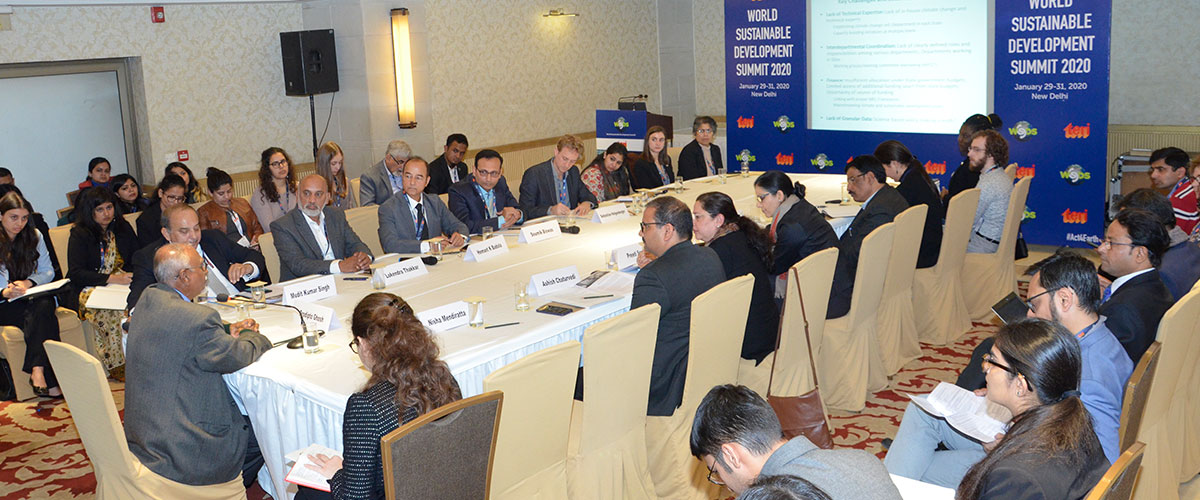Action lies in the States

India's Nationally Determined Contributions (NDCs) under the Paris Agreement is an ambitious commitment to reduce emissions and important to limit global temperature rise. While the National Action Plan on Climate Change (NAPCC) and its missions have been guiding climate policies in the country, State governments are key stakeholders in driving climate action at the sub-national level. Many states, beginning in 2008, started developing their State Action Plan on Climate Change (SAPCC) and have implemented the first round. In 2010, 33 state level plans became operational. Now, these States are in the process of reformulating their SAPCCs that reflect current realities.
At TERI's flagship event World Sustainable Development Summit (WSDS) 2020, stakeholders from states, multilateral agencies participated in a session sharing their learnings and best practices that could be replicated in SAPCC 2.0. The discussions also focussed on how national policies and international framework could help states in combating these challenges.
According to Ms Neha Pahuja, Fellow, TERI, who along with her team conducted a research across stakeholders, "The key challenges faced by states included lack of technical expertise; lack of coordination between departments and lack of clarity of roles, which also meant cross sectoral data was difficult to get; insufficient funds, with no certainty of receiving further funds along with insignificant international finances at the state level forthcoming; and lack of granular data."Towards overcoming these challenges, several solutions were put forth:
- Climate change cell/departments in the states were set up
- Capacity building initiatives were undertaken at multiple levels
- Working groups and steering committees were formed
Global and national climate policy have significantly evolved since. Earlier, there was some level of uncertainty to climate change impacts, because of lack of information and unavailability of data. Even today, precipitation patterns and predictions are not as robust as temperature predictions. In the last ten years or so, availability of expertise across states have become significant, but coordination and orientation remain wanting.
Therefore, leveraging knowledge of undertaking climate actions from the past becomes necessary. Foremost is the necessity of mainstreaming climate consciousness at a deeper level in the states. As States revise their plans, based on a common framework developed by MoEFCC, they must consider these suggestions:
- Action plans must be implementable. The output should both be measured against quality and quantity. The target statements should be clear and measurable.
- Frameworks should be in tune with the policies of the national and global goals. Best practices of well performing states and international learnings must be adopted
- All departments must be involved for which mechanisms already exist, especially Planning & Finance departments who allocate funds. For example, in Uttarakhand, every department was involved and allocated budgets for climate action
- A climate lens must be brought in in all government projects. Cross posting of climate change officers has worked well with some states in bringing this perspective
- States must work to assess vulnerability. Though today, there is no dearth of data, as was unavailable earlier, an assessment will help contribute to science-based policy making
- Monitoring and reporting of actions should be initiated from the beginning
- Political willingness, seen especially in states like Sikkim, can be a big support to executing environmental plans.
- Risk-based planning has not happened in India. Forward-looking planning based on research that incorporates future risks might help in developing more impactful plans
- All stakeholders must be brought together, which did not happen extensively in the first phase.
In the first round of actions some states have done well, some others moderately so, and a few plans remain on paper. Drawing lessons and adopting from some of the best practices implemented by states and other countries could potentially make the second SAPCC more effective in making this decade count.

